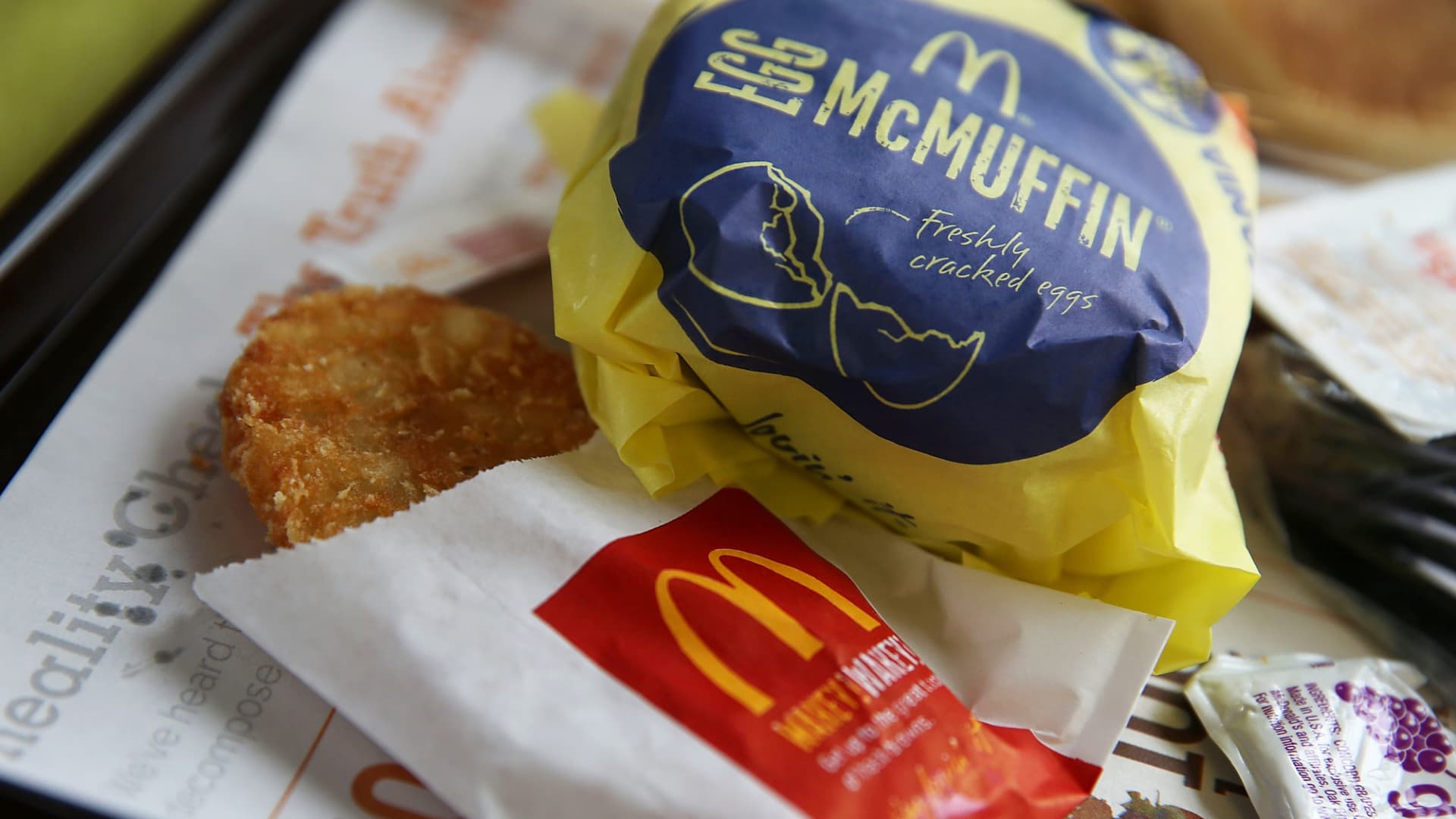Breakfast sales hold steady as people heading back to offices cut back elsewhere

Consumers may be dining out less, but breakfast sales are holding steady as people return to offices and grab a quick bite or iced coffee on the way to work.
Overall traffic to restaurants fell 2% in the second quarter from a year ago as inflation drove menu prices up, according to market research firm The NPD Group. The only category that was unchanged: breakfast and morning snacks.
Restaurant companies like Starbucks say morning sales are being driven in part by people returning to their pre-pandemic work routines. David Portalatin, NPD’s food and beverage analyst, also noted the relative affordability of breakfast items.
“For a lot of people, it’s simply a cup of coffee and maybe a specialty coffee that they’re paying a premium price for, but it’s sort of more manageable,” he said.
The cost for food away from home rose 7.6% over the 12 months ended in July, according to the Bureau of Labor Statistics. Prices for food at home climbed even higher, rising 13.1%.
Kathleen Flynn, a 26-year-old photo producer in New York, said she’s rarely eating out these days and has been cutting back spending. But she still stops by a coffee shop, La Cabra, each morning for a cardamom bun and a cappuccino.
“I have to do this because it’s my joy,” Flynn said.
A return to normalcy
Before the pandemic, the restaurant industry saw breakfast as the biggest opportunity to grow sales and gain loyal new customers. Fast-food chains stepped up the quality of their coffee and morning menus to convince people to swing through the drive-thru on the way to work or school.
In early 2020, just weeks before lockdowns, Wendy’s launched its breakfast menu nationwide, joining the likes of McDonald’s, Taco Bell, Burger King and Chick-fil-A in offering the morning meal.
But when the pandemic hit and shuttered offices and schools, breakfast saw the sharpest decline in sales. Starbucks reported that customers were buying lattes and macchiatos later in the day. Many Taco Bell locations opted to skip serving breakfast and opened later in the morning because of staffing challenges. By contrast, General Mills and Kellogg saw sales of pantry staples like cereal and Pop Tarts surge, while demand for orange juice climbed for the first time in years.
More recently as people started going out more often and reestablishing their daily routines, the trend is reversing. Total spending at quick-serve eateries, which includes fast food locations and coffee shops, climbed 32% in the 52-week period ended June 12, compared with 2019 levels, according to data from market research firm Numerator.
“Now that we’re getting back to more normalized behaviors, we’re really just returning to the oldest trend where breakfast was generally outpacing the growth of other dayparts,” Portalatin said.
More Starbucks customers are buying their coffee in the morning again. The company’s outgoing Chief Operating Officer John Culver told investors in early August that 51% of the chain’s sales in its latest quarter happened in the morning, closer to pre-pandemic levels. The company expects morning sales to strengthen even more as commuters return to offices.
Strong breakfast sales bolstered McDonald’s U.S. same-store sales growth of 3.7% in the second quarter, executives said in late July. The chain hasn’t brought back its popular all-day breakfast menu, which means Egg McMuffin fans have to get up earlier in the morning now.
Doughnut lovers are buying picking up their boxes of Krispy Kreme earlier in the day as well.
“People are starting to engage in the doughnut for the office et cetera in the morning time, so we see some growth there,” Krispy Kreme CEO Mike Tattersall told CNBC.
Paris Baguette, a South Korean-based chain of bakery cafes, has seen its U.S. breakfast traffic climb 20% compared with pre-pandemic levels, according to Nick Scaccio, the company’s U.S. vice president of operations. He attributed the chain’s strong growth to a coffee partnership with Lavazza and its efforts to build brand awareness.
The French toast stick wars
Breakfast remains a largely untapped opportunity for the restaurant industry, with many people still opting to eat cereal or eggs at home. The meal accounts for 20% about of restaurant transactions, according to NPD.
And in terms of spending, breakfast only accounts for about 13% of total fast-food sales, according to Technomic principal David Henkes.
But restaurants and convenience stores were gaining new customers in the morning before the pandemic. And as they look to build back their traffic and sales in the months ahead, many are putting more effort into marketing their morning menus.
The push is apparent in this summer’s French toast stick wars. After Sonic and Burger King added versions of the portable treats to their permanent menus, Jack in the Box brought back its version as a limited-time offer. Then earlier this month, Wendy’s introduced its Homestyle French Toast Sticks.
“[Fast-food chains] especially are really innovating around new menu items to try and capture those incremental sales as consumers start to return to the breakfast daypart within restaurants,” Henkes said.




